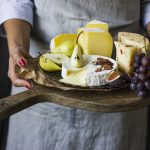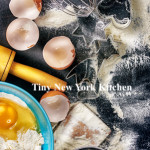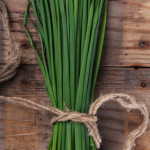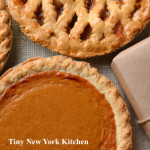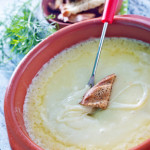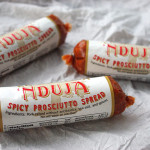Cheese Boards are a no-cook, sure-to-please option for any holiday celebration. Build a cheeseboard that’s affordable yet special. Then toast the season with festive cocktails.
A few inexpensive ingredients and simple homemade touches are all you need for a spectacular, special occasion-worthy spread. Here are some smart tips to deck your board with festivity and flavor without breaking the bank.
For a classic, colorful centerpiece, make your own cranberry and herb cheeseball. Start with a container of spreadable cheese and form into a ball. Use a sheet of plastic wrap to avoid messy hands. Roll the ball in a combination of finely chopped dried cranberries, parsley, and chives until thoroughly coated. Let sit at room temperature for 15 minutes before serving.
No need to buy expensive cheeses. Inexpensive cheddar is always a crowd pleaser. Skip the pre-cut cubes and cut the block yourself. Orange or white, mild or extra sharp. Cheddar is always a favorite.
Upgrade affordable goat cheese by rolling the log in herbs and spices, like dried thyme, dried oregano, or crushed rainbow peppercorns for a beautiful, flavorful crust. You could also keep it plain and top with jarred pepper jelly or mango chutney.
Instead of mixed nuts, opt for crunchy snack mixes, which are often less expensive and just as delicious. For the board, look for one with little or no seasoning.
Give a budget-friendly feta or mini mozzarella balls a flavor boost by marinating cubes in olive oil with herbs like parsley, oregano, or rosemary, and other seasonings like sliced chilis, crushed garlic, or lemon zest. Refrigerate overnight or up to 3 days.
Round out your cheese board with other delicious items like fresh or dried fruit (dried apricots, figs, grapes, and sliced pears), pitted olives, and plain crackers.
Pair your cheese board with a festive holiday beverage and enjoy!
©Tiny New York Kitchen © 2020 All Rights Reserved
As gardens begin to grow, one of the first perennial herbs to appear are chives. Chives are quite resilient and are particularly easy to grow both in garden beds or in pots. They can stand a bit of shade, tolerate drought, and grow well in any type of garden soil. For first time gardeners, this is an excellent plant that will yield a reliable source of flavorful nutrition.
Chives belong to the lily family and are part of a large genus of over 500 species of perennials that contain bulbs or underground stems. Known for their strong scent and distinct flavor, chives, along with garlic, onions, scallions and leeks are known as allium herbs. Allium species have been cultivated around the world for centuries and are valued both medicinally ad for their fabulous flavor.
If you grow your own chives, you can continually cut them back so the crop will continue into early fall. If you let happen to let them go you will get lovely purple-pink globe shaped chive flowers that make a beautiful garnish as well as a bright addition to spring or summer salads.
Chives are best when used fresh. Rinse and dry them well, then snip with scissors or cut with a very sharp knife. Snipped chives can be placed in freezer bags and frozen for later use, but will not maintain the texture of fresh shoots.
This is an herb that will elevate so many dishes, including soups, stews, salads, sauces, marinades, dressings, and dips. Adding a few tablespoons of chopped chives to cottage cheese will add a pleasing punch to a super simple snack. Make an easy supper of baked potatoes or sweet potatoes topped with Greek yogurt and chives. Mixing chives into cream cheese, along with lemon zest, and a grinding of black pepper will make an excellent spread for sandwiches or crackers. Omelets prepared with chives, parsley, and dill are a nice choice for any meal.
Chives contain valuable vitamin and mineral content. Vitamins K, A, and C are found in chives, as well as calcium, an important mineral. Chives also contain small amounts of magnesium, phosphorus, potassium, and sodium. Purported to be anti-inflammatory, antibacterial and antiviral, eating more chives may boost your immune system and assist in maintaining superior levels of health.
If you buy your own chives at the grocery store, look for a bright green color with no sign of yellowing or wilting. Chives will keep in the crisper drawer of the refrigerator for several days. Before using, rinse and dry well and trim the ends before using.
Enjoy this light and bright spring herb.
“Work With What You Got!”
©Tiny New York Kitchen © 2020 All Rights Reserved
The holiday season is in full swing and soon you’ll be living on Thanksgiving leftovers. Ever had pumpkin pie for breakfast followed by a full turkey meal for lunch and another for dinner? It’s easy to get in the habit of holiday indulging.
The average American gains more than a pound each holiday season. Over a decade that really adds up. As they say, “It’s easy to put it on and hard to take off.”
There are ways to enjoy the holidays, but keep yourself in check so that you don’t fall into the trap of complete abandon.
High Fat Foods
Pigs In A Blanket: High In Fat, Salt, and Carbs.
Fried Cheese Balls: High In Fat And Small So It’s Easy To Overeat.
Baked Brie: Fatty And Addictive, Plus You Have To Slather It Onto Some Carb Calories.
Chips: They Have No Nutritional
Eat In Moderation
Cheese And Crackers: Calorically Dense And Super Easy To Eat. They’re Not Special So Spend Your Holiday Calories On Something More Festive.
Once-A-Year Favorites: You Only Eat Stuffing, Latkes, And Eggnog Once Or Twice A Year. If You’ve Been Coveting Aunt Martha’s Chiffon Pie Or Cousin Tommy’s Cooked Goose, Enjoy In Moderation.
Be My Guest
Crispy, Crunchy Crudités: Make The Brightly Colored Vegetables Your First Stop For Noshing. Add Hummus To Slow Digestion.
Pork Tenderloin, Ham Or Turkey: Protein Is Going To Suppress Your Appetite Due To The Fact That It Is Slow Digesting And Triggers The Release Of Several Satiety Hormones.
Shrimp Cocktail: Low In Fat, High In Protein And A Perfect First Course For A Low Calorie Tour Of The Buffet.
Swedish Meatballs: Another Protein Packed Option That Stands Out Amid A Carbohydrate Heavy Table.
Prosciutto Wrapped Asparagus: A Great Choice To Fuel Your Body While Keeping Your Appetite In Check.
Enjoy the holidays, but enjoy them in moderation.
“Work With What You Got!”
© Victoria Hart Glavin Tiny New York Kitchen © 2017 All Rights Reserved
I don’t know a single person who doesn’t love the taste of melted cheese. Not every cheese oozes the same way. Some just melt better than others. When it comes to classic cheesy dishes, you want a cheese that’s going to melt into something creamy and smooth with a strong flavor.
Basically, the more moisture in a cheese, the better it melts. Cheddars and Goudas with high moisture content can make for a nice fondue. Emmental, Challerhocker, Comté, and Gruyere are excellent for making fondue as well. These cheeses beg to be melted. Their smooth, dense texture and nutty flavor make them the top choice for classic fondue. Bread, pickles, crackers, meats, and charcuterie are perfect fondue pot divers.
Cheddars are, of course, excellent for making mac & cheese, grilled cheese, and cheeseburgers. I tend to go for sharp or extra sharp Cheddars because I like to really taste the tanginess.
Soft cow’s milk cheese like Brie and Camembert don’t take much time to get to that beautiful melted soft texture. Just put them in the oven for a few minutes and you’re good to go. Because they come in their own serving vessel you can dip whatever you like in there.
“Work With What You Got!”
© Victoria Hart Glavin Tiny New York Kitchen © 2017 All Rights Reserved
Spreadable sausage from Norwalk, Iowa? The culinary creativity across the country never ceases to amaze me. Nduja is a spreadable sausage that comes from Calabria in southern Italy. My husband is Calabrian so it goes without saying that I love all things from Calabria. La Quercia, the cured meat producer in Iowa has introduced its American-made version, which is a mix of prosciutto, speck, and red chili peppers. It comes in five ounce links and is extremely versatile. Use it in pasta sauce, grilled cheese, BLTs, egg salad, burgers, pizza, crostini, or tacos. It’s also wonderful slathered on warm bread or crackers.
If you’re in New York City you may find it at Fairway, Amish Market, or Murray’s Cheese. If you’re in other parts of the country then go to La Quercia’s website for store locations. http://laquercia.us
“Work With What You Got!”
© Victoria Hart Glavin Tiny New York Kitchen

